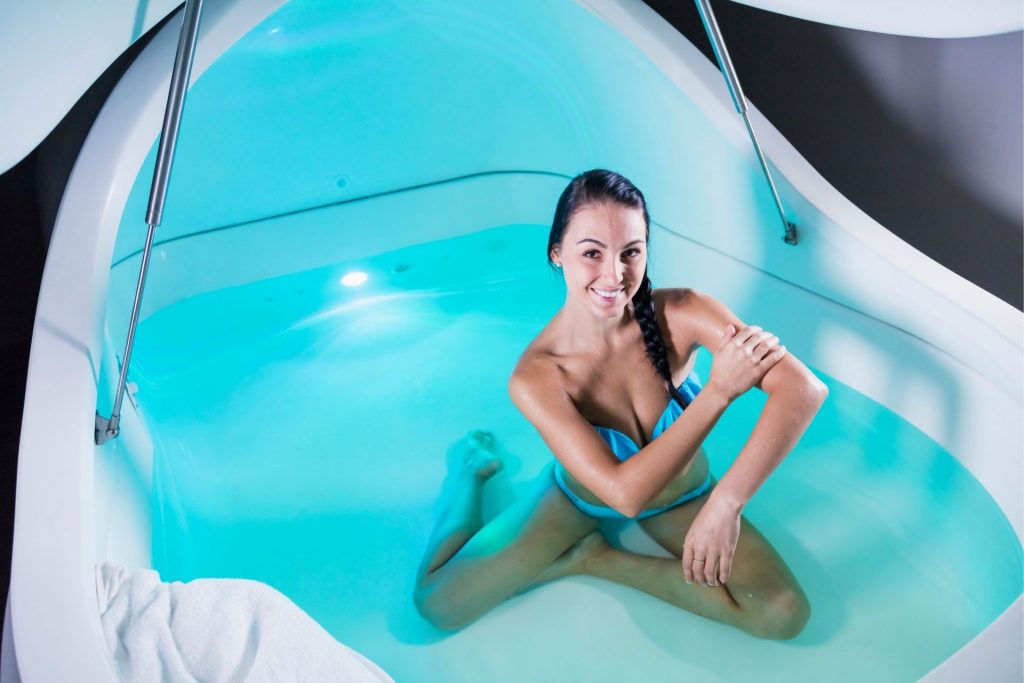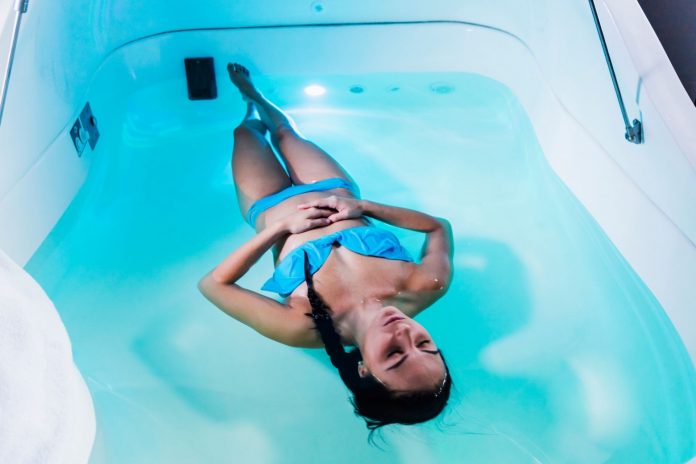Have you ever thought about floating in a pitch-dark, sealed tank? While some of you may find it claustrophobic, in reality, this can be the perfect combination of lucid dreams and meditation.
The sensory deprivation floating is indeed beneficial for both mental and physical health. But you can not ignore either the therapy or tank cost. Won’t it be great if you could make one floating tank by yourself at home?
This article is offering you a brief discussion on how to make a sensory deprivation tank at home. So, if you are new to this term, then read on to explore this relaxing world.
What is a Sensory Deprivation Tank?
Sensory deprivation tank, floating tank, or isolation tank, no matter which name you prefer, all indicate the same thing. This tank provides sensory stimulation and relaxation to the person floating inside.
In other words, the sensory deprivation tank is a soundless, lightless closed space. It is filled with highly concentrated salt (Epsom salt) and the water inside the tank is maintained to a skin temperature.
As there is no sound and light inside the tank, it provides a relaxing and meditating environment to the users. This tank goes by many names. Such as a float tank, isolation tank, etc.

How to Make a Sensory Deprivation Tank at Home
Building a floating tank is no big deal. If you are thinking a pool filled with salt is all you need, hold your thoughts for a moment. You can make a sensory deprivation tank following different methods. But each one will require some basic conditions. Before getting into the engineering part, let’s look at the factors you must consider while building an isolation floating tank:
-
- Light
- Sound
- Weight
- Condensation
- Water quality
- Temperature
- Electricity
Light
Light plays a significant role in meditation or relaxation. While some people prefer dim lighting, others go for no light at all. So, you need to customize your deprivation tank according to your choice.
If you are on a budget, remove any type of lighting source from the floating chamber or set up a few low power LED bulbs. If budget is not an issue, you can replicate the full-blown starry sky with bulbs inside the tank.
Sound
A low humming sound can help you enter the meditating state sooner. But installing a sound system inside the tank can be a bit hard. So, a soundless floating tank will be the better option for you.
Soundproofing is the best way to remove the noise from the tank. Apply sound insulators during building the sensory deprivation tank. Or you can simply use earplugs when you are in the tank.
Weight
You know the primary target of the sensory deprivation tank is to let the users experience weightlessness. You can make the float therapy work by mixing Epsom salt (magnesium sulfate heptahydrate) in the water. This salt is available in both medical and industrial grades. Always go for the medical-grade because the industrial one is full of impurities.
Are you wondering will the floating trick work with normal household salt? The answer is yes. In that case, you might need a lot more salt than usual. Moreover, the regular salt is cheaper than the Epsom salt.
Condensation
As a warmer environment is maintained inside the floating tank, there will be an incident of condensation. Sometimes, the vapor might condense on the tank hood and drip on your face. This will ruin your meditation for sure. To get rid of this situation, heat the tank hood, or use a sloppy tank roof.
Water quality
Water quality matters a lot in the sensory deprivation tank. If you float on filthy water, you will surely get itchiness or other allergies. So, what can you do?
There are many solutions available around you. The cheapest one is to set up a water filter inside the tank. An aquarium or pool water filter will work just fine. Also, you have to apply bacteria or virus-killing chemicals. Otherwise, the water will be unhygienic for therapy sessions.
Chlorine, UV light, Hydrogen peroxide, or ozone can clean your floating tank water. However, according to the experts, it is always recommended to apply multiple cleaning solutions.
Temperature
According to experts, a warm environment is more relaxing during floating therapy. You have to maintain a temperature of 34 to 34 degrees celsius. The temperature can vary a little depending on the outside weather and the comforts of the user.
Many tools can control the sensory deprivation tank temperature. But when you are making it at home, waterbed heater, pool tank heater, regular heater, or the pool heaters, anything will work.
Adding an air circulating device is always suggested if you feel suffocated in an airtight environment. However, if your sessions are short, then preheat the water and let it cool slowly during the session.
Electricity
You will require electricity while building the sensory deprivation tank. Make sure all equipment is grounded. Also, during the session, turn off the electrical devices.
Materials you need
-
- 360-gallon containment tanks (2)
- Plywood (7)
- Hydrometer
- Waterbed heater
- Styrofoam (2 inches thick)
- Stiff rod (2)
- Water filter
- Salt

How to make a sensory deprivation tank
-
- Take one containment tank and place two heaters at the back of the tank.
- Place a water filter in front of the heaters. Now adjust the second tank on the top of the first one.
- Make a hinged door by drilling holes in both tanks and sliding a cinch through the holes.
- Turn on the heater. Fill the tank until you reach 250 gallons and add salt slowly.
Sensory deprivation tank benefits
The floating therapy undoubtedly provides some health benefits. For example,
-
- Reduce anxiety
- Treat muscle tension and headache
- Improve cardiovascular health
- Increase concentration power
- Induce a clear mind
- Provide relaxation and happy mind state
Final words
Floating therapies are expensive and so are the DIY sensory deprivation tanks. Some people doubt the effectiveness of homemade floating therapies. But experts and experienced ones claim that the DIY floating isolation tanks do work well. This article on how to make a sensory deprivation tank will help you build one for yourself.
Read Also: A Complete Guide To Full Body Workout For Women At Home
















